| |
Grand
Chapiteau
Creations
Création
|
|
|

A series of shows that pay tribute to Quebec artists
|
In 2015, Cirque du Soleil signed a five-year agreement with Cogeco, a Canadian
diversified telecommunications and media company headquartered in Montréal,
to stage exclusively created shows for the newly built Amphithéâtre Cogeco in
Trois-Rivières (a city located halfway between Montréal and Quebec City).
These 75 minute shows, called the Série Hommage (or the Tribute Series), are produced by
Évènements 45 DEGREES, Cirque du Soleil's Special Events and Projects Division,
and are inspired by the musical and artistic works of iconic Québec artists.
|
|
| Dates: | Year 1: July 15 to August 15, 2015
Year 2: July 13 to August 13, 2016
Year 3: July 19 to August 19, 2017
Year 4: July 18 to August 18, 2018
Year 5: July 17 to August 17, 2019
Year 6: July 20 to August 20, 2022
Year 7: TBA 2023
Year 8: TBA 2024
Year 9: TBA 2025
Year 10: TBA 2026 |
|
|
[ Year 1 •
Year 2 •
Year 3 •
Year 4 •
Year 5 •
Year 6 ]
|
 |
2015 • Beau Dommage • Le Monde Est Fou
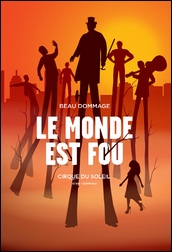 Beau Dommage is a rock band from Montréal, Quebec, Canada, who achieved popular
success in Quebec and France in the 1970s. The group's style included rich vocal
harmonies and elements borrowed from folk and country music.
Beau Dommage is a rock band from Montréal, Quebec, Canada, who achieved popular
success in Quebec and France in the 1970s. The group's style included rich vocal
harmonies and elements borrowed from folk and country music.
Pierre Huet (songwriter), Robert Léger (keyboard, flute), and Michel Rivard (guitar,
melodica, keyboards, vocals) came together as Beau Dommage in 1972 as an offshoot of
the creative association "La Quenouille Bleue", a theatre group at the Université du
Québec à Montréal. The three were soon joined by Pierre Bertrand (guitar, bass, vocals).
The following year Réal Desrosiers (drums) and Marie Michèle Desrosiers (keyboard,
vocals) joined the band.
The group's first album, "Beau Dommage", was released in 1974 and broke all sales
records at the time. The next year, "Où est passée la noce?" reached Platinum on its
first day of sales. The group met with considerable success on its yearly tours of
Europe between 1975 and 1978 as well, and also performed on numerous occasions in
Quebec and the rest of Canada. Alas, the group disbanded in 1978, reuniting only
occasionally since (1984, 1994, and 1995).
The 75-minute show brought together 25 artists, and was led by Artistic Director
Daniel Fortin and Director Jean-Guy Legault with Jean-Philippe Gonçalves handling the
music. "It is an honour for us to be able to collaborate with such an iconic band like
Beau Dommage," noted Fortin. "We want to move people, to marvel them, and to make
them feel through music." And though the team was given given free reign to "have
fun" with the music of Beau Dommage, Fortin said the show was not intended to be
nostalgic or full of sadness. "There will be madness, but a beautiful madness, made
of joy and pleasure," he said. Beau Dommage's music speaks of urbanity, but also
about Quebec's wild roots. And so would LE MONDE EST FOU. Consequently, the title
comes from the song "Le Géant Beaupré" (written by Pierre Huet and featured on the
1974 album "Beau Dommage"); Legault would rely on the concept of this song and of
the giant [Édouard] Beaupré to create his narrative.
Édouard Beaupré was born in the southern Saskatchewan town of Willow Bunch on January
9, 1881. He was the first of 20 children born to Gaspard Beaupré and Florestine Piché,
a Métis. When he started school at seven he was of average height, but at nine he was
already 1.85 metres (6.1 ft), and at 11 he was over 2 metres (6.6 ft) tall. He stopped
going to school at this time, but not because he was simple. He spoke French, English,
Méchif, Cree, and Sioux. He was an excellent horseman but at the age of 17 he reached
the height of 2.15 metres (7.1 ft) and he had to abandoned the trade. Abandoning
life on ranch, Beaupré began touring. He displayed his strength by bending iron bars
and lifting horses onto his shoulders. He toured from Winnipeg to Montréal and stayed
for a time in California.
He signed a contract on July 1, 1904 with the Barnum and Bailey circus to appear
at the St. Louis World's Fair. He died of a pulmonary hemorrhage, a complication of
his tuberculosis, at the fairground hospital just two days later. At the time he was 2.52
metres (8.3 ft) tall. At the circus's request, the undertaker embalmed the body. However,
the circus refused payment, so the undertaker decided to preserve the body which
they then put on display in St. Louis. Through an unknown connection, the body made
it to the Museum of Eden in Montréal and put on display there, but the exposition drew
such a crowd that the authorities had to come and shut it down. The body was then passed
onto a Montréal circus, but they quickly went bankrupt and so dumped the body in a
warehouse. It sat there until 1907, when two kids came across the body as they
were playing in the warehouse. The Université de Montréal claimed the body, and,
after doing some research and an autopsy, mummified the body and put him up in a glass
display case in the University.
In the 75-minute show, Beaupré the character tries to impress his "Ginette" through
fifteen scenes. They were joined on stage by the clowns Philibert Hébert-Filion
and Ariane Cabana in typical clothes of the 1970s (personifying the singers
Michel Rivard and Marie Michèle Desrosiers) in addition to 25 other artists.
Jean-Philippe Gonçalves remixed a dozen songs, mostly from the first two albums
released in 1974 and 1975. In addition to "Le Géant Beaupré", Gonçalves also used
"Le Picbois", "La complainte du phoque en Alaska", "Ginette", "23 décembre", and
"Chinatown" from the 1974 self-titled album, and "Le blues d'la métropole" from
1975's "Où est passée la noce?".
Creative Team
- Artistic Director — Daniel Fortin
- Director— Jean-Guy Legault
- Musical Director — Jean-Phi Goncalves
- Chorégraphie — Lydia Bouchard
- Set Designer — Geneviève Lizotte
- Costume Designer — Marilène Bastien
- Makeup Designer — Florence Cornet
- Lighting — Nicolas Descôteaux
- Vidéo Design — Stéfano Gemm, Mikros Images
 |
2016 • Charlebois • Tout écartillé
"On the trail of Lindberg, a retro-futuristic aviator in search of perpetual
travel, spectators are treated to a breathtaking plunge into an eclectic universe,
ruffled, poetic and tinged with daring all carried by the unbridled imagination of
Charlebois, where the journey is always more important than the destination."
|
For the second edition of the Cirque du Soleil Tribute Series created exclusively
for the Amphithéâtre Cogeco in Trois-Rivières, "Tout écartillé" drew on the musical
works of Montréal native Robert Charlebois, a Francophone Canadian author, composer,
musician, performer, and actor - a leading figure of the Quebec music scene for more
than 50 years. His lyrics, often written in joual (the common name for the linguistic
features of basilectal Quebec French that are associated with the French-speaking
working class in Montréal), are funny, relying upon plays on words. Among his best
known songs are "Lindberg" and "Je reviendrai à Montréal".
The show's title - Tout écartillé - is drawn from the album Québec Love (1969)
whereas the song "Lindberg" was the show's creative spark.
|
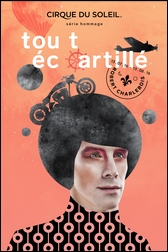
|
"We started with the song "Lindberg" and his character, that kind of madman who
crossed the Atlantic without knowing if he would arrive on the other side. This is
the trip we make with Robert [Charlebois] and his universe. Acrobatics becomes one
of the mediums through which stories are told, but it's very emotional. You listen
to "Ordinaire" and you can't help but be touched. [He's] been through a lot over
the years, but he's still a kid at heart," says Daniel Fortin, executive director
at 45 Degrees and artistic director of Tout écartillé.
Juggler Eric Bates plays the character of Lindberg, a beautiful character who
didn't set out to become rebellious in the beginning. "Robert, too, has become a
rebellious icon in his own way, in his songs, and in his way of confronting his
work at the time. In the show we follow the character as he traverses what's real
and what's not," explains the director Jean-Guy Legault.
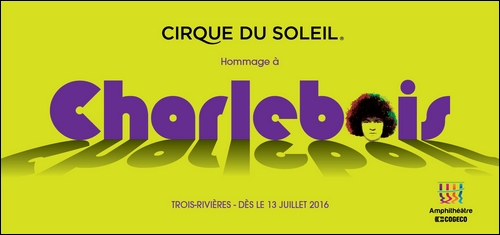
Musically, TOUT ÉCARTILLÉ differs greatly from LE MONDE EST FOU. For the first
installment, musical director Jean-Philippe Gonçalves remixed the original recordings
for the tribute show. But here Gonçalves, after listening to hundreds of his songs,
found that he "wanted to [elevate Charlebois'] music and create surprises" rather
than just remix the originals. To that end he had Charlebois' re-record about
fifteen of the songs for the show. "We started by recording his voice under the
original arrangement, then we rebuilt everything," Gonçalves said. "The word 'rebel'
is quite present in his music. We go from one period to another, from one style to
another. It's pretty wild! It's very energetic!"
While Charlebois himself felt he sounded better over the originals, not everyone
took to these "new" arrangements...
Even if he finds that he sings better than before, the result is disappointing...
we lose the original "sound" of the young Charlebois - his urgency, his timelessness,
his rattles. How can he, at the age of seventy-two, redo "Tout écartillé", "Te v'là"
or "Dolorès", songs in which [the younger] Charlebois pushed those notes [into the
stratosphere, and retain their relevancy]? How to "recreate" the mood and state of
mind of the times without being physically on stage? Without the "crisses" of Louise
Forestier in "Lindberg"? The choice to re-record these songs does not seem
judicious! (La Presse)
Tout écartillé opens up beautifully on the words of the "Mur du son"... («je
veux être plus qu'un oiseau, plus qu'un avion, un UFO, je veux être un météorite,
vous entraîner dans mon orbite...»). Then comes the character of Lindberg, alter
ego of Charlebois, which serves as the show's common thread. The table is set and
beautifully: skirts and tassels, shorts and t-shirts in bright colors, banana bikes
and gleaming motorcycles, projections of psychedelic spirals, the entire hippie era
of the 60's and 70's is represented.
| |
Yé-yé is a style of pop music that emerged from France, Italy, Spain and Portugal
in the early 1960s. The term "yé-yé" was derived from the English term "yeah! yeah!",
popularized by British beat music bands such as the Beatles.
|
Costume designer Marilène Bastien was able to count on a team of fifteen people
to help realize the 130 costumes, 50 wigs, and 160 pairs of shoes needed for the
show. Designs, she says, touch on as much on the 1960's (yé-yé) as they do in
retrofuturism (a trend in the creative arts showing the influence of depictions of
the future produced in an earlier era).
From the onset, with a Russian bar number on "CPR Blues", the show takes off.
"J't'aime comme un fou", "Lindberg" and "Les ailes d'un ange" are linked without
forgetting the ballads "Je reviendrai à Montréal" and "Ordinaire", which ends with
a jump in the void! Not only are the acrobatic numbers in perfect harmony with the
music, but the director Jean-Guy Legault and the scenographer Geneviève Lizotte
have managed to tie the scenes together wonderfully.
Highlights include Aerial Silks - three on stage and two above the crowd - with
the piece "Le mont Athos"; Banquine and Contortion paired with "Te v'là"; The Eric
Bates cigar box manipulation number (originally seen in Les 7 Doigts de la Main's
"Sequence 8"), Québécois diabolo artist Dominique Bouchard performed on the
beautifully remixed mythical "Fu Manchu", and Hoops from the flamboyant Alexandra
Royer. Not to mention the final act: "Wheel of Death".
Under the creative direction of Daniel Fortin, this show of 75 minutes, created
exclusively for the Amphithéâtre Cogeco, brought together 25 artists in a staging by
Jean-Guy Legault and musical direction of Jean-Phi Goncalves.
Creative Team
- Daniel Fortin — Director of Creation
- Jean-Guy Legault — Director
- Jean-Phi Goncalves — Musical Director
- Geneviève Lizotte — Set Designer
- Alain Jenkins — Props Designer
- Marilène Bastien — Costume Designer
- Florence Cornet — Makeup Designer
- Etienne Boucher — Lighting Designer
- David Girard — Acrobatic Designer
- Lydia Bouchard — Choreographer
 |
2017 • Luc Plamondon • Stone
"For the third consecutive year, Cirque du Soleil has the great privilege to
present an exclusive show in Trois-Rivières in the incredible setting of the Cogeco
Amphitheatre. It is a growing pleasure for us and our creative teams to work on the
biggest [and most influential] artists of Quebec culture and music, and again this
year, we will not hide our pleasure!" — Yasmine Khalil, Executive Producer
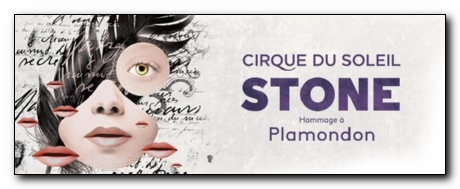
This year the great lyricist Luc Plamondon and his work are at the heart of this
major production. STONE pays tribute to this emblematic French-
Canadian lyricist who has written for many artists over the years, notably the Québécois
singers Bruno Pelletier, Diane Dufresne, Robert Charlebois, Céline Dion, Ginette Reno,
Fabienne Thibeault, Martine St. Clair, and Garou, as well as the French singers Julien
Clerc, Nicole Croisille and Johnny Hallyday. He is also the co-author of a number of
musicals. The two most successful are Starmania (music composed by Michel Berger) and
Notre-Dame de Paris (music composed by Riccardo Cocciante).
"I am very pleased that Cirque du Soleil and the Corporation des Événements de
Trois-Rivières have thought of me for this third edition of the Tribute Series. This
attention rejoices and honours me. Last summer, the tribute to Robert Charlebois
dazzled me with the modernity of the projections, the inventive musical arrangements
and the staging that skilfully blends of circus and dance, as well as integrating the
young Trifluvian population on stage - I expect no less [...]!" says Mr.
Luc Plamondon.
Under the creative direction of Daniel Fortin, this 75-minute performance, created
exclusively for the Cogeco Amphitheatre, brings together 29 artists in a production
by Jean-Guy Legault and a musical direction by Jean-Phi Goncalves. "Again this year,
we have access to an incredible musical repertoire with the work of Mr. Plamondon.
This universe rich in words, images and emotions, opens us a vast space of creation.
The entire team that has the privilege of working on the artwork of Plamondon is
going further to pay tribute to this immense artist," expresses Daniel Fortin,
Creative Director of the show.
This new chapter is part of a desire to push creative
boundaries and to propose a different vision of the musician's repertoire, as seen
through the lens of Cirque du Soleil's creativity.
Just like Plamondon gave a voice to so many singers, it is through the voice of new
muses that this tribune will take place. A timeless point of view on the work of the
lyricist will be given where the music will be at every corner of this show, in its
splendor as in its silences, so that poetry strikes without warning connoisseurs as
much as future fans. These new muses are... Martha Wainwright, Milk & Bone, Betty
Bonifassi, Beyries, La Bronze, Marie-Pierre Arthur, Klô Pelgag, Marie-Mai, Valérie
Carpentier, Catherine Major, Safia Nolin, Marie-Josée Lord, Ariane Moffatt, and
Gabrielle Shonk.
| |
Stone is an iconic term from one of
Plamondon's most famous songs (Le Monde est Stone). A term representing a state
of mind sailing between the real and the fanciful, which sticks very well with
the punk-rock-baroque universe in which will be immersed the characters and
spectators.
|
Taking place in the heart of a baroque punk-rock opera universe, in the abandoned
Belmont Park, an ecentric maestro with an Amadeus-like look is hypnotized by a
voiceless automation muse, Lolita, in whom he visions the incarnation of the
perfect voice, the one which will give a heart and soul to his music. As a post-
modern queen of this strange park inhabited by timeless and playful characters,
this human spirit, captive in her automation body, will be humanized through the
musical tableaux of Luc Plamondon, and culminate with the resonance of her own
voice.
- SCENOGRAPHIE — A strange disused post-modern amusement park in
which stands a carousel that can pivot on itself and move in space. A textured
grid, which can split into several sections, forms the structural framework of
the paintings. Revisited Baroque accessories, worn by the characters or added
to the decor, complete this opera stone atmosphere.
- MUSICAL APPROACH — A punk-rock-baroque universe calls for an
eclectic musical signature combining diverse styles which give a unique musical
soul to this eccentric world populated by automatons in search of humanity. The
paintings are carried by several distinct and contemporary female voices
symbolizing the obsessive quest for the perfect voice of the maestro towards
his muse, highlighting the interdependent relationship of an author with an
interpreter. A timeless and not nostalgic point of view on the work of Luc
Plamondon, where music lives in every corner of the show, in its bursts as
in its silences, so that poetry strikes without warning the connoisseurs as
much as the future "fans".
- CHARACTERS — MAESTRO: An extravagant composer with contagious
enthusiasm and laughter, he dedicates his life to his obsessive quest for the
perfect voice. Colorful and slightly crazy character, he sees in a voiceless
automaton muse the timeless diva which will give body and soul to his musical work.
LOLITA: A voiceless automaton muse with the air of a post-modern diva, she is the
timeless queen of this strange disused amusement park populated by eccentric
characters. A human soul captive to her automaton body, she will gain humanity
through paintings nourished by contemporary female voices that will lead her to
the blossoming of her own identity, visually represented by the illumination of
her sparkling dress. THE EXTRAVAGANTS: Characters with questionable credibility
forming a happy mixture of talents and charlatans in a disjointed ballroom
universe. We find similis maestros a little too enthusiastic, with illegible
scores, which encourage spectators to embark on singing tricks pushing the limits
of bad musical taste; a wrapped Zoltar with insane predictions; an impossible
accent gypsy who can read minds; as well as a fat good woman with grotesque laughter.
THE ECCENTRICS: Highly colorful playful characters populating and carrying the breath
and eccentricity of this disused amusement park.
Creative Team
- Daniel Fortin — Executive Director, Creation
- Jean-Guy Legault — Director
- Émilie Thérrien — Assistant Director & Acro Performance
- Jean-Philippe Gonçalvez — Musical Director
- Simon Guilbault — Scenographer
- Alain Jenkins — Accessories Designer
- Sébastien Dionne — Costume Designer
- Florence Cornet — Make-up Designer
- Étienne Boucher — Lighting Designer
- Lydia Bouchard — Choreographer
Acts/Scenes
- "Parc Belmont" — Corde lisse (Smooth Rope)
- "Monopolis" — Interpretive Dance
- "Oxygène" — Struggle (White Suits)
- "Le monde est stone" — Aerial Strap Duo
(Dmytro Turkeiv and Iryna Galenchyk)
- "Lili voulait aller danser" — Russian Cradle
- "Ma mère chantait toujours" — Lolita Scene
- "L’île aux mimosas" — Aerial Choreography
- "Seul", "Incognito", "J’ai rencontré l’homme de ma vie", &
"Pour une histoire d’un soir" — Dance Medley
- "Je danse dans ma tête" — Korean Plank
- "Call girl" — Hoops Manipulation
- "Tiens-toi ben, j’arrive!" — Icarian Games
(Batbold Andryei and Munkhbat Ganbayar)
- "Le blues du businessman" — Cyr Wheel
- "Les sans-papiers" — Acrbatic Medley
- "S.O.S d’un terrien en détresse" — Handbalancing on Canes & Fire
- "Le monde est fou" — Bungee and Aerial Trapeze
- "Hymne à la beauté du monde" — Finale Singalong
"Since I consider Luc the father of modern rock opera, Quebec version, this year we
are dealing with a universe that is quite particular: industrial and Baroque. What I
wanted to do with this year's show is to keep that signature. I call it a punk-rock-
baroque opera!" — Jean-Guy Legault, Director
Few spectacles can plunge us into an intimate reflection on what makes up
the immensely beautiful and the greatest. STONE, Cirque du Soleil’s homage
to Luc Plamondon, is a masterfully successful work that does exactly that. The show
plunges into the world of a dilapidated Belmont Park, an amusement park that operated
between 1923 and 1983 in the Montreal neighborhood of Cartierville. (Located on the
banks of Riviere des Prairies, Belmont Park was best known for its wooden roller
coaster, the Cyclone, but at one time or another had a carousel, Ferris wheel,
picnic grounds, dance hall, swimming pool, roller skating rink, plus numerous other
rides for adults and kids.) The tone is immediately set: the atmosphere here is dark,
with a gigantic black metalic carousel on stage. And we are transported there with
the help of a comedic and extravagant poet (the ecentric Amadeus-like Maestro; with
his tousled hair he is no doubt an alter ego of Plamondon himself) and his voiceless
automaton muse (Lolita).
The evening begins with "Parc Belmont" performed by Martha Wainwright. During this
time, we find several characters in a Corde lisse number hanging from the enormous
metal carousel structure. Then, it's under the air of "Monopolis" sung by Milk & Bone
that all artists take to the stage for an interpretive dance routune. Here, perched
atop a a carousel in her immense dress formed by her automaton procession, Lolita
reigns over this universe with the allure of post-modern boarding school, which will
come to life in a flight of dance and smooth strings, giving rise to a contemporary
ballet punk-rock-baroque specters showing the desire of the eccentrics to free
themselves from this world of restraint and to extricate themselves from this
automaton universe. Lolita will find herself walking on the wall and even on the
ceiling!
We then move on to "Oxygène", interpreted by Betty Bonifassi, where the first
sign of an explosion in this automaton world in search of freedom ocurrs. An
improbable and contrasting encounter between the baroque and contemporary
worlds, where the eccentric characters seek to extricate themselves from
their corset, symbol of their restraint. Tableux combining contemporary
dance, illusion of weightlessness, and spiderweb effect ensues as the dancers
struggle to break thir bonds. They leave to make room for a beautiful
Aerial Straps duet to "Le monde est stone" by Beyries.
Next up are four arists for a Russian Cradle routine to "Lili voulait aller danser"
sung by La Bronze. Then the Maestro makes us sing along with "Ma mère chantait"
interpreted this time by Marie-Pierre Arthur. Here Maestro and Lolita meet again;
Lolita finds herself thrown into the air as she wears a huge dress filled with lightbulbs.
We then come to a sweet moment where four women hang in the air to perform a rousing
choreography in air all to the song "L’île aux mimosas" sung by Klô Pelgag. In this
number, in the spirit of automatic reverie, Lolita sees fantasized humanized versions
of herself spring up, twirling and dancing around her and on the walls in a huge ballet
reflecting the incessant whirlwind of her desire for humanity. She will find herself
for the first time freed from her rigid and structural automaton dress, which will
drift without a body at the back, while Lolita will spring from this dream in her
humanized attire. And culiminate this part of the show with an all-cast medley to
"Seul", "Incognito", "J’ai rencontré l’homme de ma vie" and "Pour une histoire d’un
soir".
Then, two artists come on for a Korean Plank performance to "Je danse dans ma tête"
sung by Marie-Mai, followed by Hoops Manipulaion to Valérie Carpentier's rendition of
"Call Girl", and a rousing Icarian Games performance to "Tiens-toi ben, j’arrive!"
sung by Catherine Major. A woman arrives after that with a huge wheel while Safia Nolin
interprets "Le blues du businessman" in her own way. In a delicate and elegant Cyr
wheel number, Lolita tames the gestures and movements that are linked to her new
human reality. She twirls around the stage soberly lit by the Maestro, who guides
her with a light bulb in a constant desire to inject a creative impulse through the
music, which will bring out that perfect voice he has been looking for so long.
Lolita will find in this tableaux the masters of the carousel, partners of her
automaton world, with whom she shares a circular ballet embodying her own
transformation and that of the universe and the characters around her.
A block of acrobatic courses follow while the entire artistic compliment find
themselves on stage and in the rows of the auditorium to perform "Les sans-papiers"
by Marie-Josée Lord. In this humanized world more and more conscripted of rules and
pre-conceived judgments, the Eccentrics see themselves pushed back and reengaged in
their fantasized world of disused amusement park, the only circumscribed place where
one accepts their extravagance. In an acrobatic choreography evoking their desire
not to be re-locked or excluded, they look for ways out to the public in order to
show that extravagance should be the norm that we celebrate and not the margin that
we enclose.
The hubbub
gives way to a Handbalancing on Canes number followed by a rousing fire piece whereby
one of the artist's metallic dresses is set on fire! Surrounded by eccentrics and
surrounded by fences, a balancing act indulges in an intimate and captivating balance
number on canes in its desire to tame the crowd. She is making a final attempt to
break down the barriers and let in the breath of hope and openness that are the
Eccentrics. This breath appears in the form of a fiery artist who ignites the places,
and her dress ignites in a cry of the heart calling for the renewal of the spirit of
openness from which the beauty of the world will be reborn. We set out to extinguish
those flames to "S.O.S d’un terrien en détresse" from Ariane Moffatt.
The evening drew to a close when four acrobats descended from the ceiling for a
bungee and aerial trapeze act, as the first notes of "Le monde est fou" interpreted
by Gabrielle Shonk fill the amphitheatre. As the acrobats continue to dance in the skies
above us, the entire ensemble leads the crowd in "Hymne à la beauté du monde" interpreted
by Diane Dufresne. There is something inherently beautiful in realizing thousands of
spectators have their eyes riveted to the sky, while singing «ne tuons pas la beauté
du monde» ("do not destroy the beauty of the world"). As if we too, in concert with
the artists, implore something divine. What better than to finish the evening with a
collective song.
"It's more than a tribute, it's a real gift," Mr. Plamondon said after the
show, visibly delighted with the work of the creative team.
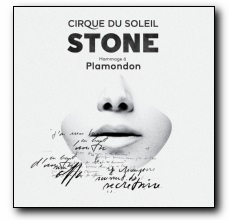 The soundtrack created for STONE, Cirque du Soleil’s Hommage à Plamondon, has
been the subject of high praise since it was enjoyed by the public at the Cogeco
Amphitheater in Trois-Rivières last summer. So, for the first time, an album
featuring the songs from the tribute show was the subject of a music album
release, available May 18, 2018.
The soundtrack created for STONE, Cirque du Soleil’s Hommage à Plamondon, has
been the subject of high praise since it was enjoyed by the public at the Cogeco
Amphitheater in Trois-Rivières last summer. So, for the first time, an album
featuring the songs from the tribute show was the subject of a music album
release, available May 18, 2018.
Label: XS Music
UPC: 776693161020
Item #: 2048733X
Catalog #: XSCD1610
Release: 5/18/2018 (CAN)
Release: 5/25/2018 (International)
01. “Le parc Belmont” — Martha Wainwright (5:45)
02. “Monopolis” — Milk & Bone (4:59)
03. “Oxygène” — Betty Bonifassi (5:31)
04. “Le monde est stone” — Beyries (6:58)
05. “Lili voulait aller danser” — La Bronze (4:38)
06. “Ma mère chantait toujours” — Marie-Pierre Arthur (3:53)
07. “L’île aux mimosas” — Klô Pelgag (3:51)
08. “Je danse dans ma tête” — Marie-Mai (4:13)
09. “Call Girl” — Valérie Carpentier (4:29)
10. “Tiens-toé ben, j’arrive!” — Catherine Major (5:46)
11. “Le Blues du Businessman” — Safia Nolin (5:37)
12. “Les sans-papiers” — Marie-Josée Lord (3:44)
13. “SOS d’un terrien en détresse” — Ariane Moffatt (4:48)
14. “Le monde est fou” — Gabrielle Shonk (3:49)
15. “L’hymne à la beauté du monde” — Ensemble (3:34)
But it wasn’t as simple as just placing the music on a soundtrack; Concalves
put in a lot of studio work to adapt the show’s musical pieces for an album. “It
was necessary to adapt the music because sometimes there were breaks or lengths
required by the show in the structure [of the music]. Additionally, I had to
remix [the music] completely [for the album] because the mixing done for a large
amphitheater is very different from one made for an album that will be listened
to at home or in a car.”
“In the end, I [feel] that the album stands very well on its own, detached from
the visual of the show. Of course, it is a soundtrack so people who have had the
chance to see the show will [relive the experience], but it will also be interesting
for those who have not seen it.”
Although Conclaves is not convinced STONE is his best work among the three shows
presented at the Cogeco Amphitheater thus far, he is convinced that this soundtrack
deserves to be heard. “In the context of shows, it’s the one I went the furthest
away on from musically because we did not work from master tapes; we had new
performers. The end result definitely deserved to be on an album. For me, it was
a shame to lose this work after only twenty shows. I wanted it to survive and it’s
a feeling that people at Cirque also shared.”
This does not mean that Cirque will necessarily repeat the same approach in the
future. “It’s always case by case,” explains Goncalves. “For example, with the
Colocs (2018's Hommage Show), we work from original tapes, which the process more
complex because there are a lot of legalities involved. Every year we wondered if we
could release the music for these shows, considering it as much from an artistic point
of view based on the rights that needed to be secured.”
 |
2018 • Les Colocs • Juste une P'tite Nuite
"We have chosen to salute the timeless
work of Les Colocs. An emblematic figure of the 90s Quebec music scene, this band
has created a singular artistic universe, mixing influences and collaborations.
Their songs continue to resonate in each of us. It is this popular anchorage and
openness to the world that we wanted to celebrate. The time of a little night."
— Daniel Fortin
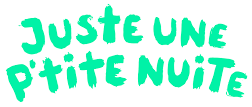 Les Colocs (The Room-mates) were a rock music group from Montreal. Founded in 1990
and fronted by Dédé Fortin, Les Colocs composed Québécois songs coloured with humanity,
simplicity, and social conscience (especially regarding poverty). They contributed to
the history of Québec music with their sound - infused with brass - first very wild
and festive, later more mellow, as well as more inspired by swing, country, blues,
and African music. This evolution inspired a collaboration with the Senegal-born
Diouf Brothers for the album Dehors Novemre (1998).
Les Colocs (The Room-mates) were a rock music group from Montreal. Founded in 1990
and fronted by Dédé Fortin, Les Colocs composed Québécois songs coloured with humanity,
simplicity, and social conscience (especially regarding poverty). They contributed to
the history of Québec music with their sound - infused with brass - first very wild
and festive, later more mellow, as well as more inspired by swing, country, blues,
and African music. This evolution inspired a collaboration with the Senegal-born
Diouf Brothers for the album Dehors Novemre (1998).
The group promoted tolerance and had a multicultural line up. For example,
Mike Sawatzky (guitar and saxophone) is a Cree from Saskatchewan, André Vanderbiest
(double bass) is from Belgium, and Patrick Esposito Di Napoli (harmonica) was from
Northern Catalonia. Dédé Fortin (as well as members such as Serge Robert) was a
passionate Québec sovereigntist (a political movement as well as an ideology of
values, concepts and ideas that advocates independence for Québec). The band played
an important role in the 1995 Québec referendum (the second referendum to ask voters
in Québec whether the province should proclaim national sovereignty and become an
independent country) via partisan shows. Obviously, they were part of the resurgence
of political songwriting after a drought in the 1980s and early 1990s.
The festive nature of many of their songs contrasts with the deaths of two members
of the band. In 1994, Patrick Esposito Di Napoli died of AIDS. And the band effectively
came to an end in 2000 after frontman Fortin took his own life. Regardless, Les Colocs
hold a major place in the history and evolution of Québécois music.
This 75-minute show, created exclusively for the Cogeco Amphitheatre, directed
by Jean-Guy Legault and under the musical direction of Jean-Phi Goncalves, brings
together 27 artists. The artistic and musical direction of the show will focus on
highlighting the festive, collective, and inclusive aspect of the Colocs. This year,
it is from the group's original soundtracks and the voice of Dédé Fortin that the
show's musical theme will be created on to interweave with a live musical performance
for the very first time.
|
"The idea of the show is to find the spirit of the Colocs," said Director Jean-Guy
Legault. "They were an eclectic and unifying group that were very engaged through
strong and impactful lyrics. Even though the band did not have a very long life, they
have remained within the hearts and minds of a lot of people."
This year's show is a challenge, he continued, because "for the Colocs, the danger
is to get lost in the music and forget their message. We tend to listen to the music
and forget the very impactful lyrics. Dédé Fortin was a poet very connected to his
time. And all that he wrote remains very current: it could have been written today.
It holds the hope of disillusioned youth."
|
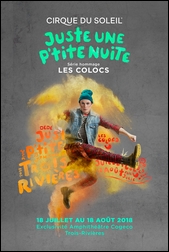
|
The Colocs and Quebec are closely and inextricably linked, says Visual Media
Designer Félix Lemay. “For me, the Colocs are the fleur de lys. We can not
talk about modern Quebec without mentioning the Colocs somewhere. They have marked
an entire generation and those who followed because of their music. They knew how
to express as much in their music as in the poetry of their lyrics, an urban reality
that stuck to our experience. They have been able to translate the reality of a
group of people who have recognized themselves in their songs - as much in their
cheerfulness as in the suffering that many express."
Taking place in the heart of a dilapidated alley, a group of eclectic dysfunctional
friends gather each evening. Here a simple light beam, emerging from a lamp post, gives
birth to a colorful universe transforming an urban alley into a festive theater from
which emerge tableaus constantly playing with this contrasting relationship between
greyness and brightness of color, between urban reality and reality dream. All this,
in a spirit of contagious celebration where the public is an accomplice and
stakeholder, recalling the good-natured atmosphere of the shows of the Colocs.
Just a little night, time stops.
Just a little night, we party again.
"We’re in an alley party - we did not call them alley cats for nothing!" says
director Jean-Guy Legault. "They were very close to people, near
the street, in a very inclusive, almost communal universe. So, we wanted to
recreate this universe in which they inhabited."
And recreate it they have. Makeup Designer Florence Cornet notes "It’s as if
the girls had spent the night with their make-up." With a dirty and outdated side.
The girls have makeup splashes, while the boys will have scratches in the face,
a way to evoke alley cats. Costume Designer Sébastien Dionne created what he calls
a studied street look. "We imagined a gang of roommates who wear what’s in the
closet. Everyday clothes, inspired by the grunge period, that they will exchange
during the show. Thus, rather than finding definite and unique characters on stage,
the show follows a band of friends. The different sensibilities of this group tint
the scenes that make up the show: festive, poetic, moving, rebellious, free and
punchy.
"A particularity this year is that instead of following a character, because we
want to bathe in the soul of the group," says Legault, "we will follow something
more symbolic. Throughout the show we'll follow a jacket and a pair of boots from
scene-to-scene; all the people of the production will end up wearing them in each
of the numbers. The soul and the spirit will be present without there being a
personification of any of the group's members."
- SCENOGRAPHIE — From a world of urban greyness springs color. A
festive splash, with striking contrasts, arises from all sides through the artists.
A contemporary universe made up of tunnels designed from sewer line. A world in
constant transformation with the arrival on the stage of theatrical panels manipulated
by artists. A simple light beam, emerging from a lamppost, gives birth to a whole
colorful universe transforming an urban alleyway into a festive theater from which
emerges paintings constantly playing with this contrasting relationship between
greyness and burst of colors, between urban reality and reality dreamed. All this,
in a spirit of contagious celebration where the public is an accomplice and
stakeholder, recalling the good-natured atmosphere of the Colocs' shows.
- COSTUMES — A colorful and improbable style of clothing reminiscent
of the very inclusive and eclectic side of a gang of roommates where everyone can
steal pieces of clothing from their friend. We have created special patterns, strange
and surprising layouts, strongly inspired by the tiled lines of the "tartans" (kilt).
Strong proposals that mark the patterns and colors of the paintings.
- MUSICAL APPROACH — The music for the show Just a Little Night
highlights the festive, collective and inclusive aspect of the Colocs. For the
first time as part of the Tribute Series, a live musical performance highlights
the soundtrack for a powerful effect. There are also percussive accessories and
modules which are used to attack the paintings in a Stomp style, giving rise to
moments when the decor also becomes performative.
- CHARACTERS — The unifying spirit of the Les Colocs group is at
the heart of the Just a Little Night show. So, rather than finding defined and
unique characters on stage, we rather follow a group of friends in a festive alley
spirit. The different sensitivities of this group come to tint the tables that
make up the show: festive, poetic, moving, rebellious, free and impactful.
Creative Team
- Daniel Fortin — Executive Director, Creation
- Jean-Guy Legault — Director
- Jean-Phi Goncalves — Musical Director
- Émilie Thérrien — Assistant Director & acrobatic choreographer
- Simon Guilbault — Set Designer
- Florence Cornet — Makeup Designer
- Sébastien Dionne — Costume Designer
- Florence Cornet — Makeup Designer
- Alain Jenkins — Props Designer
- Eric Champoux — Lighting Designer
- Marie-Odile Haince-Lebel — Chroeography
- Caroline Lemieux — Choreography
- Yves St-Pierre — Artistic Coordinator
- Michel Daudelin — Technical Director
- Chantale Jean — Production Direction
- Jolyanne Gendron — Production Coordinator
- Jérémie Deschamps Bussières — Visual Media Designer
- Félix Lemay — Visual Media Designer
Acts/Scenes
- "Passe-moé la puck" — TrampoWall
- "Belzébuth" — Chinese Pole (Félix Pouliot and Jessica Hill)
- "Tassez-vous de d’là" — Hand-to-Hand Duet
(Maxime Blanckaert and Nathan Briscoe)
- "Atrocetomique" — Urban Dance
- "Bonyeu" — Tumbling
- "Le répondeur" — Aerial Lamp (Alexis Vigneault)
- "Tout seul" — Interpretive Dance
- "Dehors novembre" — Bungee Loop (Laurence Racine Choinière)
- "Dédé" — Juggling (Nicolas Fortin)
- Body Percussion / Gumboot (Jason Nious)
- "Julie" — Dance Rope (Tori Boggs)
- "La rue principale" — Comedic Number
- "Juste une p’tite nuite" — Aerial Hoop
(Caitlin Tomson-Moylan and Spencer Craig)
- "La Comète" -— Russian Swings
 |
2019 • Cowboys Fringants • Joyeux Calvaire
The fifth chapter of the Cirque du Soleil tribute series celebrated the music
of Les Cowboys Fringants, the popular and critically-acclaimed Quebec band who
has rocked the French-speaking world for two decades. This series is presented
exclusively at the Cogeco Amphitheater in Trois-Rivières.
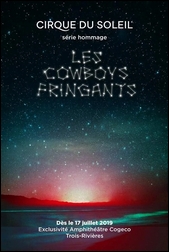
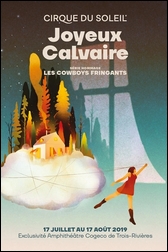
|
Les Cowboys Fringants are a folk rock music group formed in 1995 in Repentigny,
Quebec. They perform Québécois néo-trad music (modernized Quebec folk music with
a rock flavour) and draw on country music. They have an international underground
following, especially in France, French-speaking Belgium and Switzerland. Band
members hail from the Montreal suburbs of Repentigny and L’Assomption. The entire
band collaborates on the lyrics, although guitarist Jean-François Pauzé often
contributes more than the others.
Les Cowboys represent an important part of modern Québécois music. They are part
of the néo-trad movement that appeared in Quebec around the turn of the 21st
century, and they embody a resurgence of political songwriting (after the drought
of the 1980s and parts of the 1990s, political songwriting had been a victim of
Post-Referendum Syndrome). As the néo-trad movement adapts Quebec folklore into
contemporary crafts, the political message of the band is a re-occurrence of 1970s
chansonnier activist messages of left-wing solidarity and, recently, sovereignism,
although in a more distinctly modern way. They also sometimes adopt a minimalist
and dadaesque style, a trend of the Quebec music scene of the 2000s – a decade of
voluntary simple yet nonetheless quite intelligent and joual lyrics, therefore
subversive and akin to a sort of lyrical naïve art. (The 1970s did see the first
wave of voluntary joual art, like the songs of Robert Charlebois and Aut’chose, and
the plays of Michel Tremblay, although not as willingly exaggerated. This is present
even more in the music of Les Trois Accords, Les Denis Drolet, and Daniel Boucher,
or in “Carole”, the song by “Pépé et sa Guitare”).
The usual subject matter of the group includes: environmentalism, poverty,
anguish and family troubles, as well as the denouncing of consumerism, exploitation,
state-controlled gambling, cynical government attitude and political apathy. While
some of those subjects are serious in appearance, they are often treated in a light
manner, sometimes even in a fun, amusing and ironic way. The band also deals with
themes of Quebec history, Quebec independence, suburban life, childhood and
adolescence, kitsch, relationships and sports. Their songwriting is renowned for
having woven an elaborate tapestry of fictional characters with interpersonal
relationships, and sometimes a number of these characters appear in more than one
song. Much like their writing, the clothes of the male members of the band are
quite unique, sometimes purposely normal or kitsch and something of a postmodern,
second degree artistic statement.
The band themselves are noted fans of Passe-Partout composer Pierre F. Brault
and have performed shows in his honour. They have also been influenced by French
singer Renaud, and his songs with political messages and local popular language
(for Renaud, the French argot).
Many of the idiosyncrasies of their music stem from Marie-Annick Lépine, a
versatile musician, who makes the band line-up distinct from the conventional
guitar-bass-drums-singer. Her talents contribute to the vivacious sounds of
instruments like the violin, mandolin and accordion. She has also worked on
the Dumas album Le cours des jours.
 In the heart of a sleepy riverside suburb, as the first glimmers of color
emerge from the fall, a young girl escapes into her fantasy world, carried by
the resonant words of the Cowboys Fringants. Prisoner of a world surrounded by
small houses of all sizes, she sways freely on a swing suspended from the joists
of an old quay on the banks of the river.
In the heart of a sleepy riverside suburb, as the first glimmers of color
emerge from the fall, a young girl escapes into her fantasy world, carried by
the resonant words of the Cowboys Fringants. Prisoner of a world surrounded by
small houses of all sizes, she sways freely on a swing suspended from the joists
of an old quay on the banks of the river.
In this reassuring place, reality is transformed according to one's
imagination, concerns and ambitions. Lucid and dreamy, she remakes the world
table by scene, one story at a time, gently painting a universe where nature
takes back its due and where what is true is not quite. The houses float on
the water and twirl between heaven and earth. The trees are paper mache and
people are a fantasy reflection of the world it is created.
Ironic and mushy, touching and real, provocative or even scathing, the
Cowboys are the reflection of a resilient and humanity-laden generation, driven
by this bubbling desire to say, to shout, to scream, to rush, but also carried
by this simple desire to tell, to delicately highlight what is beautiful in us
and around us. And for Margot, it is through this committed poetry that her buried
imagination will become reality.
The scenographic universe is inspired by the St. Lawrence River and the
surrounding nature. The scenography of Joyeux Calvaire offers a fanciful
interpretation of this nature and reflects the imagination of the Cowboys
Fringants. Paper mache trees, floating houses, a water pond and a large
wharf are the key scenic elements. The scenography is dynamic, it evolves
during the show and supports the highlights of the acrobatic numbers by
following the narrative. We invite the viewer to delve into this fantasy
that offers a look at our environment and its poetic depth.
- COSTUMES — For Joyeux Calvaire, we wanted to transpose the
fall with its warm colors, materials and rich textures. We play with contrasts
that surprise and give character to the characters while tinting them with poetry.
The signature remains inspired by haute couture and the richness of its details.
The paper characters, the autumn leaf dress, the water are all challenges that
have shaped the work of the costumes for Happy Calvary.
- MAKEUP — The painted portrait of a woman's face, juvenile, with
a certain gravity in her eyes, a carefree youth mixed with a determination, the
deep look, a palpable and fascinating intensity ... Here is the departure of the
inspirations for the Makeup of Happy Calvary. This portrait was the pivot from
which the artistic direction and the creative process for makeup development were
forged. The color palette is inspired by autumn with orange hues, purples and
natural colors. The evocation of painting is done through a set of textures. The
characters coming out of the reveries of a teenage girl give makeup a humanity in
all its diversity, sometimes serious, sometimes luminous. These faces remind us
that everyone is unique, carrying his story, his life and his dreams. Everyone
advances on a path that is his own, but in connection with all others.
- MUSICAL APPROACH — The Cowboys Fringants are a very performative
stage group. Their communicative energy and their proximity to their audience are
unifying. They oscillate between intensity and intimacy. For Happy Calvary, we
sought to accentuate these nuances and contrasts. We went to draw on the orchestral
aspect of the work of the Cowboys Fringants to create an almost cinematic replay
with rearrangements close to original music. The main character, Margot, has a
musical color that borrows from the instrumental sonorities of the group,
especially through the accordion and the violin. The 17 songs that make up the
14 paintings of the show form a nice balance between emblematic songs and more
unknown titles.
- CHARACTERS — MARGOT: She is the main character. A dreamy girl
living in a residential suburb, she is inspired by her imagination to bring to
life a constantly changing reality that evolves with her aspirations and concerns.
THE PAPER SUBURB: Imaginary distortion of the suburb fantasized by Margot. A poetic
universe fabulous of any room where she is the heroine of an unlikely world where
everything becomes possible. THE MIRAGES: Mythical community born from Margot's
illusory and romantic vision of the people who live in his real world. As a
painter of the world around her, she invents lives, stories and personalities
to the people who inhabit her sleepy suburbs to make them larger than life and
nourish her own world of poetry. His imaginary universe becomes more real, more
alive and more inspiring than his own reality.
Creative Team
- Yasmine Khalil — Executive Producer
- Daniel Fortin — VP Creation
- Marie-Josée Adam — Producer
- Jean-Guy Lagault — Director
- Jean-Phi Goncalves — Musical Director & Arrangements
- Emilie Therrien — Freestyle Performance Designer
- Emilie Therrien — Acrobatic Choreographer
- Yves St-Pierre — Assistant Director
- Simon Builbault — Set Designer
- Vincent Desjardins — Choreography
- Alain Jenkins — Props Designer
- Florence Cornet — Makeup Designer
- Sébastien Dionne — Costume Designer
- Karine Beaudoin — Hair Designer
- Eric Champoux — Lighting Designer
- Sébastien Samyn — Video Designer
Acts/Scenes
- "Break Syndical" — Aerial Silk
- "Les Hirondelles" — Dance Trapeze
- "La Cave" — Flag Manipulation
- "En Berne" — Flag Manipulation
- "Bye Bye Lou" — Russian Cradle
- "Pub Royal" — Hula Hoops
- "Joyeux Calvaire!" — Russian Bar
- "La Tête Haute" — Bungee Straps
- "Le Gars d'la Compagnie" — Dance
- "Plus Rien" — Duo Rope Pendulum (Rigolo)
- "La Manifestation" — Dance
- "La Dévisse" — Monocycle
- "Toune d'Automne" — Hand to Hand
- "Pizza Galaxie" — Cyr Wheel
- "Les Etoiles Filantes" — Aerial Straps Duo
- "Droit Devant" — Dance
- "Par Chez Nous" — Fixed Bars
 |
2022 • Chanteuses Québécoises • Vive nos Divas
This sixth opus in the Cirque du Soleil Tribute Series - Vive nos divas,
is a love letter offered to Quebec singers who have left their mark on generations
with their strength and determination. They paved the way and broke down barriers
for a promising future for women today.
A musical fable wandering through all eras of our memory, the show celebrates the
living heritage and the vibrant legacy of our singers, carried by a rhythmic acrobatic
and choreographic breath. In a scenography inspired by the power of nature, you will
discover a bucolic and refined universe, in which a young queen guiding her people
walks from painting to painting, her gaze turned towards the future.
Truly handmade, like folding an origami, Simon Guilbault's scenography is both
theatrical and naive. An ode to the natural expanses of Quebec, a parallel with what
we have most noble and luxurious decanted into 5 major themes. Fjords, verdant
forests, vast meadows, cliff sides and raging skies. All adorned with a classic
stage setting that sets the tone for this awe-inspiring diorama.
- COSTUMES — In a rebellious shades of red, Nicolas Vaudelet has
created an architectural universe that changes with movement. A scenographic costume
that flirts with manipulation and the puppeteer. Opulent and timeless volumes made
of humble textures well anchored in the natural and the raw.
- MAKEUP — Faces freshly washed in dew, soft eyes and bitten lips.
Audrey Toulouse envisions an almost glossy porcelain finish, juxtaposed with natural
volumes. The color palette will be a red monochrome, sometimes warmed up, sometimes
cooled thanks to color accents such as pink, mauve, orange or yellow. Flowers from
our fields will be added to the proposal to create new textures. The artists will
have their feet and arms painted in gold to illustrate the work and the road
accomplished. The place where our people place their wealth.
- CHOREOGRAPHY — Under the choreographic direction of Lydia Bouchard,
Véronique Giasson and Édith Collin-Marcoux intertwine to develop a hybrid of
contemporary, classical and hip-hop. Not only are several dancers of international
caliber found on the stage, but each of them represents a character in the show in
their own right.
- MUSICAL APPROACH — Under the musical direction of Jean-Phi Goncalves,
the music of the show Vive nos divas pays tribute to our queens of Quebec song,
retracing 90 years of music. The musical rearrangements navigate from one style to
another. Electric, pop, soul, gospel and philharmonic themes will be performed
thanks to the presence of singers on stage, and will transport the public into the
musical world of Vive nos divas. The selection of 21 songs, known by different
generations, underlines the narrative and elevates the performance.
- CHARACTERS — PHOENIX: She is a visionary young girl, strong
and fragile at the same time. She will be haunted by the memory of her deceased mother
and by her doubts... Driven by her people, she will find the strength to lead in her
own way and rise. THE GODMOTHERS: Camped by the singers, they are the witnesses, the
narrators, the good godmothers sometimes benevolent, sometimes confrontational. They
will be the great accomplices of the public, willingly breaking the 4th wall. A
strong and exuberant entity. THE PILGRIMS: This entity, encamped by the troupe, is
omnipresent. Made up of a variety of endearing characters, this community is united
and united by this desire to evolve together.
Creative Team
- Marie-Josée Adam — Executive Producer
- Fabrice Becker — Director
- Matthew Whelan — Producer and Senior Production
- Bonnie Brown — Director, Project Development and Planning
- Julie Mitchell — Director, Partner Support and Services
- Lydia Bouchard — Director, Choreography Director
- Jean-Phi Goncalves — Musical Director and Arrangements
- Marie-Hélène Delage — Director of Creation
- Erwann Bédard — Lighting Designer
- Audrey Toulouse — Makeup Designer
- Sonya St-Martin — Acrobatic Designer
- Nicolas Vaudelet — Costume Designer
- Simon Guilbault — Set Designer
- Alain Jenkins — Prop Designer
- Edith Collin-Marcoux — Chroeographer
- Véronique Giasson — Choregorapher
Acts/Scenes
- CROSSING / Trampoline —
"Le Début d'Un Temps Nouveau" by Renée Claude
- FEAST / Hair Suspension —
"Je Veux Tout" by Ariane Moffat and "Salluit" by Elisapie
- FULL MOON / Duo Sphere —
"Entre L'ombre et la Lumière" by Marie Carmen
- THE CLIFF / Duo Contortion —
"Birds" by Fills-Aimé and "Chats Sauvages" by Marjo
- VICTORY / Fire Dance —
"J'ai douze ans" by "Diane Dufresne"
Other songs include:
- "Bloody Mother Fucking Asshole" by Martha Wainwright
- "C'est Zéro" by Julie Masse
- "Chica Chica Boom Chic" by Als Robi
- "C.O.B.R.A" by Marie-Mai
- "Cul-de-Sac" by "Les Soeurs Boulay
- "Le Début D'un Temps Nouveau" by Renée Claude
- "Entre L'ombre et la Lumière" by Marie Carmen
- "I'm Alive" by Céline Dion
- "J'ai un Amour Qui ne Veut Pas Mourir" by Renée Martel
- "J'ai un Bouton Sur La Langue" by La Bolduc
- "J'irai où tu iras" by Céline Dion
- "La Laideur" by Safia Nolin
- "Mommy" by Pauline Julien
- "Si J'étais un homme" by Diane Tell
- "Tous les cris les S.O.S." by Marie-Denise Pelletier
- "Un peu plus haut, un peu plus loin" by Ginette Reno
|
|
|
|
|
|

![]()




